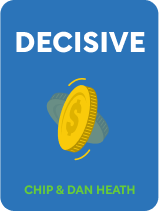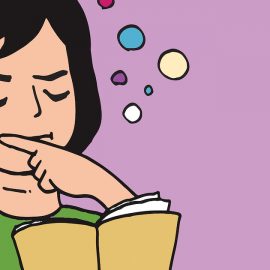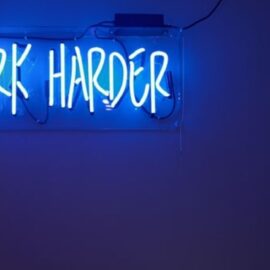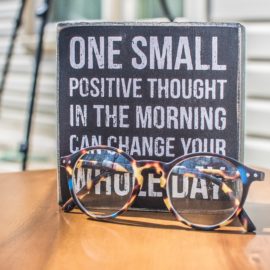

This article is an excerpt from the Shortform book guide to "Decisive" by Chip and Dan Heath. Shortform has the world's best summaries and analyses of books you should be reading.
Like this article? Sign up for a free trial here.
Is it a good idea to expand your options when making important decisions? What’s the ideal number of options for a decision?
We can significantly improve our decisions by coming up with more options. Doing so guarantees that you have at least two backup options. However, having too many options overwhelms you. It’s best to aim for three to four strong, distinct options.
With this in mind, here’s how to make better decisions by widening your pool of options.
Uncover More Options
Because of binary thinking, during the first step of decision-making, we tend to come up with only two options. There’s ample psychological research on how to make better decisions, and findings suggest considering more than two distinct options facilitates faster, more creative decisions that better suit our needs. Additionally, doing so guarantees that you have at least two backup options.
How Many Options Should You Have?
Many researchers and authors investigate how many options are optimal for decision-making. Because Decisive focuses on big decisions, we’ll share several findings from research that examines high-stakes decisions (rather than inconsequential decisions, such as what color tie to wear).
Like the Heath brothers, researchers have observed that having lots of options doesn’t always lead to better, more creative decisions with helpful backup options: There are clear negative consequences of having too many options. For example, when people are offered too many options for healthcare plans, they become stressed and make a careless choice—or in some cases opt out of enrollment altogether. Similarly, one study found that online daters who chose from among six people to date were more satisfied with their decisions than people who considered 24 options.
Furthermore, although the Heath brothers warn against binary thinking, some research illuminates the benefits of binary choices. For example, research on retirement planning found that people made wiser investment choices when presented with a binary of two options versus a selection of five options.
Finally, the optimal number of choices may depend on how different those choices are from each other. Research supports the Heath brothers’ claim that it’s important to consider options that are distinct from each other. For example, research found that when doctors were presented with three options for patient care including two highly similar options, they usually opted for the most dissimilar option to avoid having to choose between the two similar options.
The fact that there’s no clear consensus among researchers about the optimal number of options suggests that this number depends on the nature of the decision.
| Which Decisions Are Worth Developing Multiple Options For? This first step of the Heath brothers’ process, uncovering more options, offers many benefits—but it may be time-intensive. Life is finite, as Oliver Burkeman reminds us in his book Four Thousand Weeks, and he argues that we must thoughtfully manage our time to prioritize what matters most to us. Similarly, Barry Schwartz argues in The Paradox of Choice that having too many choices in all areas of our lives causes us to devote too much time to unimportant decisions. So, how do we decide which decisions to spend time on? Psychologist Dan Ariely, author of Predictably Irrational, recommends considering whether the decision you’re making has an expiration date and prioritizing decisions that do. For example, a person with a sick grandparent may prioritize the decision of how to spend time with them over a decision that doesn’t expire (such as whether to buy a grill). Once we’ve determined which decisions are worth our time, we can reduce our decision-making time for less-important ones. One psychologist, who warns that decision overload leads to procrastination, offers several techniques: Have someone else make the decision. Find someone else who might be better at making that decision than you (and possibly even enjoy making it). For instance, if you’re unsure what to wear to an event, consider asking a fashionable friend to choose your outfit. Choose a “go-to” option. For recurring decisions, automatically go with the same, easily doable option—even if it’s not perfect. For instance, if you want to exercise more, choose a “go-to” exercise—such as a 30-minute run—and only deviate from that plan if you have the time and energy to brainstorm something that requires more planning (such as weightlifting). |

———End of Preview———
Like what you just read? Read the rest of the world's best book summary and analysis of Chip and Dan Heath's "Decisive" at Shortform.
Here's what you'll find in our full Decisive summary:
- Why our minds are wired to make bad decisions
- How biases and cognitive flaws distort your thinking
- A four-step process to improve your decision-making






